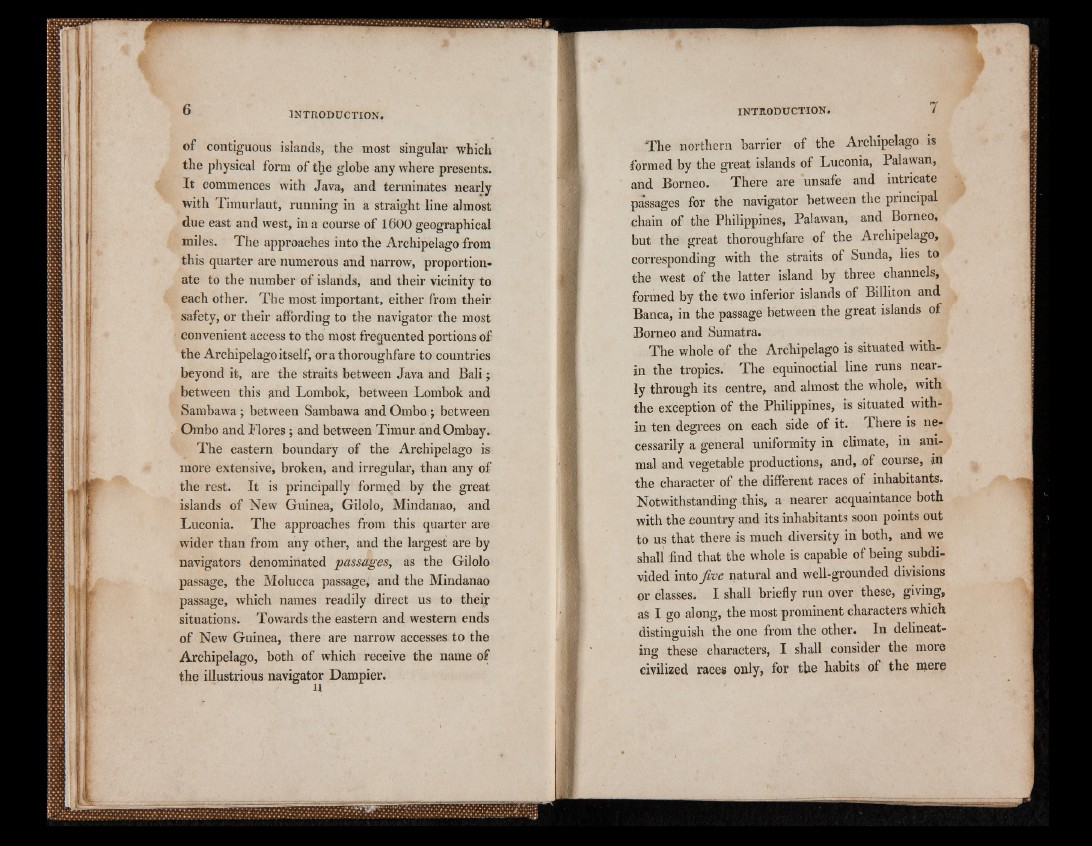
of contiguous islands, the most singular which
the physical form of the globe anywhere presents.
It commences with Java, and terminates nearly
with Timurlaut, running in a straight line almost
due east and west, in a course of 1600 geographical
miles. The approaches into the Archipelago from
this quarter are numerous and narrow, proportionate
to the number of islands, and their vicinity to
each other. The most important, either from their
safety, or their affording to the navigator the most
convenient access to the most frequented portions of
the Archipelago itself, or a thoroughfare to countries
beyond it, are the straits between Java and Bali j
between this and Lombok, between Lombok and
Sambawa; between Sambawa and Ombo; betwreen
Ombo and Flores ; and between Timur and Ombay.
The eastern boundary of the Archipelago is
more extensive, broken, and irregular, than any of
the rest. It is principally formed by the great
islands of New Guinea, Gilolo, Mindanao, and
Luconia. The approaches from this quarter are
wider than from any other, and the largest are by
navigators denominated passages, as the Gilolo
passage, the Molucca passage, and the Mindanao
passage, which names readily direct us to their
situations. Towards the eastern and western ends
of New Guinea, there are narrow accesses to the
Archipelago, both of which receive the name of
the illustrious navigator Dampier.
The northern barrier of the Archipelago is
formed by the great islands of Luconia, Palawan,
and Borneo. There are unsafe and intricate
passages for the navigator between the principal
chain of the Philippines, Palawan, and Borneo,
but the great thoroughfare of the Archipelago,
corresponding with the straits of Sunda, lies to
the west of the latter island by three channels,
formed by the two inferior islands of Billiton and
Banca, in the passage between the great islands of
Borneo and Sumatra.
The whole of the Archipelago is situated within
the tropics. The equinoctial line runs nearly
through its centre, and almost the whole, with
the exception of the Philippines, is situated within
ten degrees on each side of it. There is necessarily
a general uniformity in climate, in animal
and vegetable productions, and, of course, in
the character of the different races of inhabitants.
Notwithstanding this, a nearer acquaintance both
with the country and its inhabitants soon points out
to us that there is much diversity in both, and we
shall find that the whole is capable of being subdivided
into five natural and well-grounded divisions
or classes. I shall briefly run over these, giving,
as I go along, the most prominent characters which
distinguish the one from the other. In delineating
these characters, I shall consider the more
civilized races only, for the habits of the inere